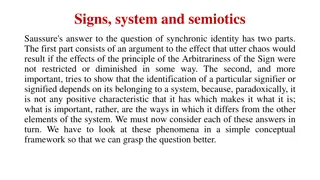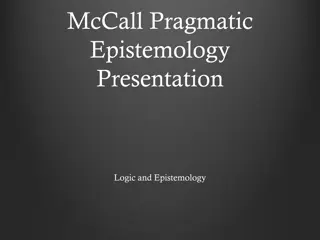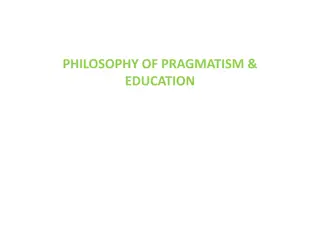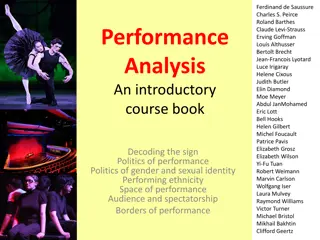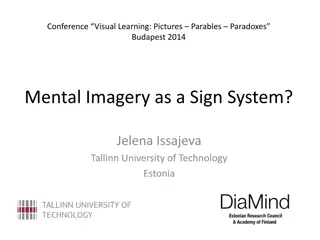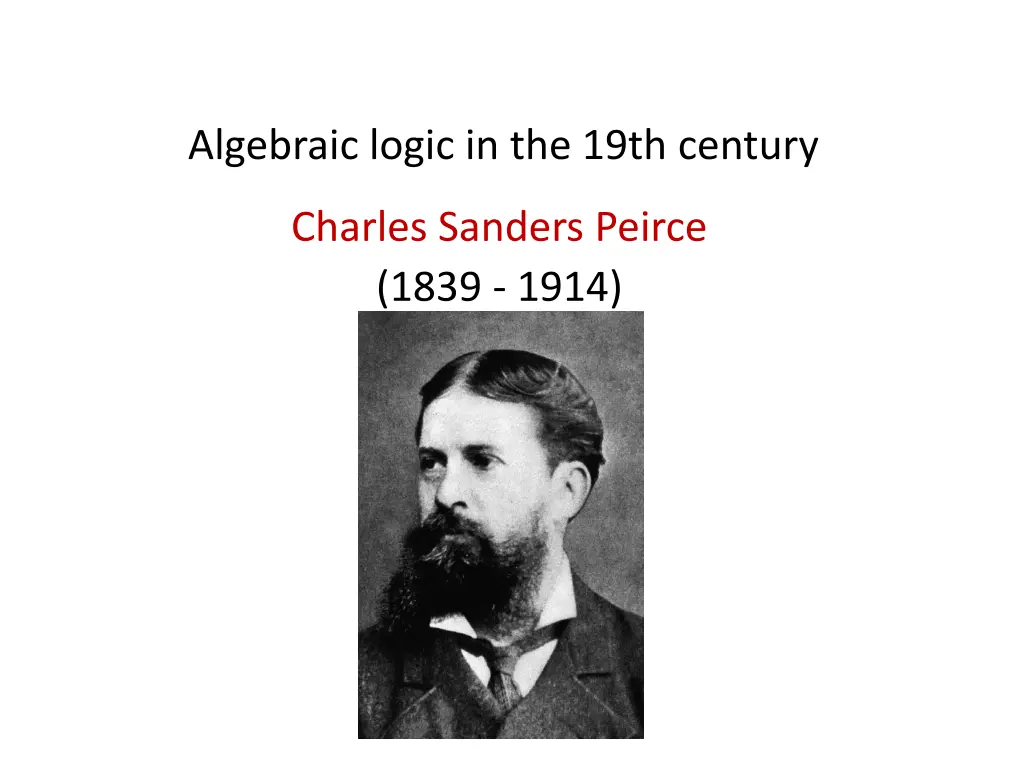
Algebraic Logic in the 19th Century
Explore the development of algebraic logic in the 19th century by prominent figures like Charles Sanders Peirce, George Boole, and Frege. Discover the foundations of quantification, operations for binary predicates, and second-order logic. Dive into the world of existential graphs and the evolution of propositional logic.
Uploaded on | 0 Views
Download Presentation

Please find below an Image/Link to download the presentation.
The content on the website is provided AS IS for your information and personal use only. It may not be sold, licensed, or shared on other websites without obtaining consent from the author. If you encounter any issues during the download, it is possible that the publisher has removed the file from their server.
You are allowed to download the files provided on this website for personal or commercial use, subject to the condition that they are used lawfully. All files are the property of their respective owners.
The content on the website is provided AS IS for your information and personal use only. It may not be sold, licensed, or shared on other websites without obtaining consent from the author.
E N D
Presentation Transcript
Algebraic logic in the 19th century Charles Sanders Peirce (1839 - 1914)
George Boole (1847, 1854): algebra of unary predicates Attempts to construct an algebra of binary predicates: A. De Morgan, 1860 s Relational product: yRSx z(yRz zSx) Read: y is an R of an S of x. Two sums : y(R+ S) x z(zSx yRz) I. e., y is an R of every S s of x. y(R+ S)x z(yRz zSx) y is an R only of x s S-s. Converse: xR y yRx Connections: (RS) = S R
Frege: Interpreted language + fixed universe Algebraic logicians: algebraic expressions with changing interpretation( model theory). Jourdain 1914: Algebraic logicians concentrate to the Leibnitian idea of calculus ratiocinator, follower of the logistic tendency to the lingua characteristica.
Peirce Relative terms: n-ary predicates in general (n 2) They are common names denoting ordered n-tuples. Dual relative terms : binary predicates. Operations for binary predicates: Inner/non-relative multiplication and addition: Boolean conjunction resp. disjunction. L+B denotes the ordered pairs where the first member is a lover or a benefactor of the second. Converse on the usual way. Relative product: the usual way again. Relative sum: L B : a lover of everything but benefactors
Quantification (1883) Universe: {a1, a2, an, } Value of a term F for an object ai: [F]i=1 if ai has the property F, 0 in the other case. [L]ij=1 if ai loves aj, 0 in the other case. There are some Fs is true iff ??? >0 Somebody is a lover of somebody is true iff ? ????> 0 Everything is F is true iff ???>0 ( , : usual arithmetical meaning) Any proposition whatever is equivalent to saying that some complexus of aggregates [sums] and products of numerical coefficients is greater then zero. Remarks: Negations can be brought to such a form by the de Morgan-rules. We can leave off >0 and the square brackets.
Operations and quantification: ????= ????,??? (concatenation denotes relative, comma Boolean product) (? ?)??= ?(???+ ???) Most important result: Every formula can be written in prenex form (sequence of quantifiers + Boolean polinom). Second-order logic (1885) Second-Intentional Logic Definition of identity: ??? = ?(?? ??) ( ?? ??)
Existential graphs Propositional logic: alpha-graphs P, Q, R: elementary propositions P This is a sheet equivalent with claiming the proposition P; the graph of the proposition P is the letter itself. P Q This is P Q ; the graph consists of the two letters, and the sheet has the meaning that we claim this conjunction.
P: P The closed line is a cut or sep, the sign of negation. The area separated by the cut is a context (marked with red). The part of the sheet outside of every cut is a (distinguished) context, too: we are claiming the proposition represented by this context.
Let us interpret this sheet: Q P In the innermost, blue context we have Q. Seen from the next, red context, Q is negated, and we have P. So in the red context we have P Q . In the outermost, distinguished context we have negated the content of the red context, therefore the sheet claims (P Q) . The figure consisting of two letters and two cuts is the graph of P Q .
The outermost context and the contexts delimited by an even number of cuts are positive contexts. Contexts delimited from the outermost context by an odd number of cuts are negative contexts.
Beta-graphs: First-order logic Letters stand for predicates now. A continuous line (identity line) corresponds to an individual variable bounded by an existential quantifier. The arity of a predicate is determined by the number of identity lines joined to it; the arguments are the variables. Be A: artist, F: falsifier. A F ??(?) ??(?)
A F ? ? ? ? ? A F ?(? ? ?(?))
A F ?(? ? ? ? ) A F ?(?(?) ??(?) ? y) Alpha-graphs: special case of beta-graphs, with 0-place predicates.
Identity lines may be branching with many endpoints: many predicates about the same individual. F L D A An artist, who is not a falsifier, likes a dog. Farmer Donkey Owns Beats If a farmer owns a donkey, he beats it.
Calculus P K if it is possible to transform by the rules the sheet representing P to a sheet representing K. Axiom: the empty graph (tautology). Rules: 1. (Erasure) Any graph G may be erased in a positive context. 2. (Insertion) Any graph G may be inserted in a negative context. 3. (Iteration) If an instance of a graph G occurs in a context c, another instance of G may be inserted in c or in any context nested in c. 4. (Deiteration) An occurrence of a graph G that could have been derived by iteration may be erased. 5. (Double cut) Two cuts may be drawn around or can be removed from every graph, provided that no graph occurs between the cuts in question.
Derivation of? ?: Axiom 1. Double cut P 2. Insertion 3. Iteration P P

